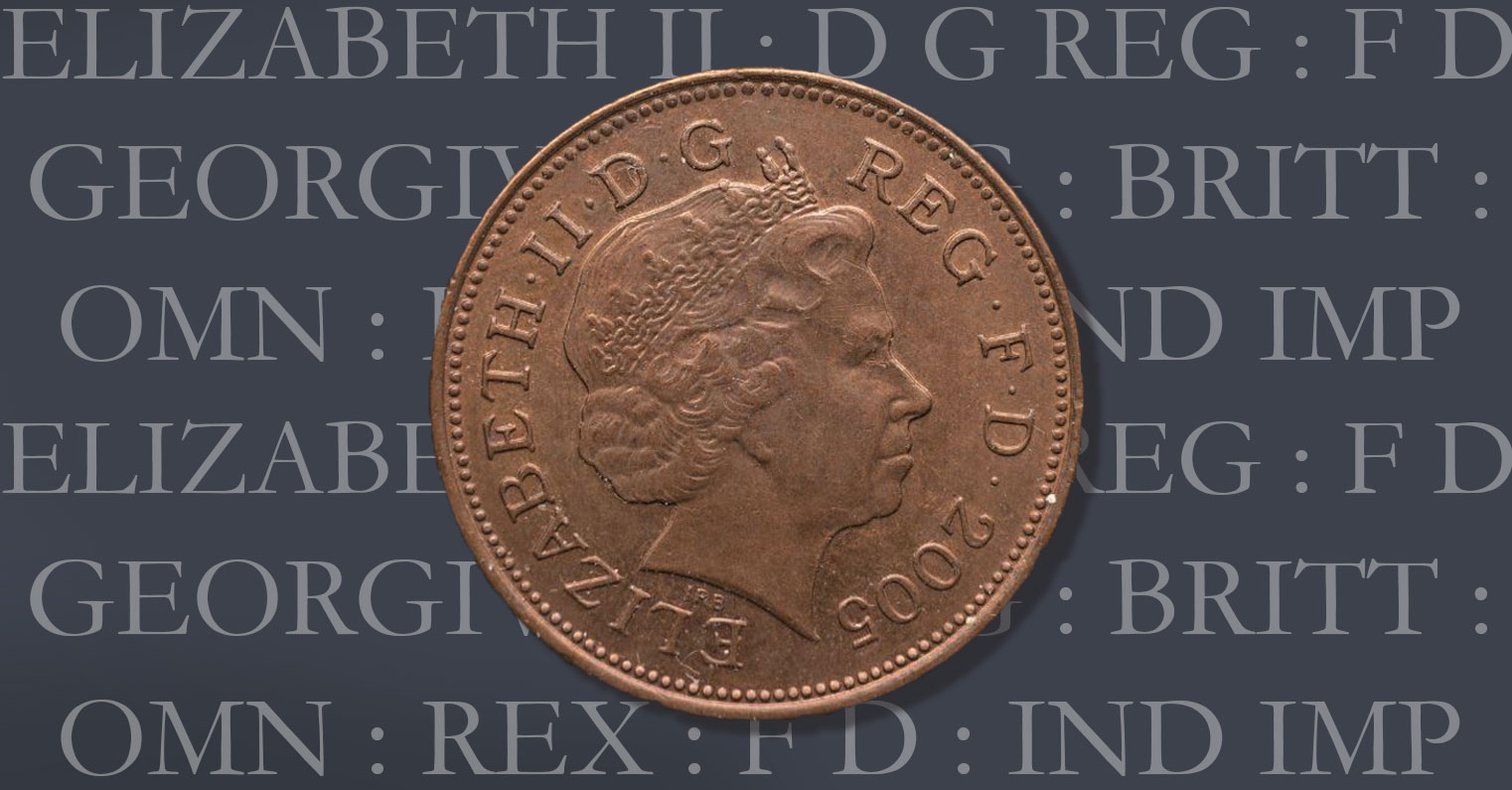
Latin inscriptions have adorned the obverse of British currency for hundreds of years. Here, we take a look at what these inscriptions mean.
We start by looking at the most current British coinage, to see what the Latin refers to around the portrait of Her Majesty Queen Elizabeth II. The inscription reads:
ELIZABETH II : D G REG : F D
So, let’s see what each part of this refers to:
ELIZABETH II
This of course refers to Her Majesty the Queen. Some previous monarchs have opted to use the Latin spelling of their name instead of the English.
D G REG
This is an abbreviation of the Latin phrase DEI GRATIA REGINA which translates as to “By the Grace of God, Queen”. If the monarch were a King this would change to D G REX
F D
This stands for FIDEI DEFENSOR, or, in English, “Defender of the Faith”. This is one of the titles bestowed upon the monarch and it refers to Her Majesty being the supreme governor of the Church of England. The origin of the phrase dates back to Henry VIII who was granted the title by Pope Leo X in 1521.
If we go back further than our current monarch, Queen Elizabeth II, you will see other Latin abbreviations. A fine example of this would be the King George V Gold Sovereign of the London Mint of 1925, which you can view HERE.
The Latin inscription on this coin reads as follows:
GEORGIVS V : D G : BRITT : OMN : REX : F D : IND IMP
Breaking this down, we have the following:
GEORGIVS V
As mentioned previously George V was one of the monarchs who chose to have his name in Latin on his coinage, rather than English.
D G
As before, this means DEI GRATIA referring to the fact that all monarchs rule by God’s grace .
BRITT
This simply refers to Britain and can also be seen sometimes on coinage as “BR”.
OMN
This is from the Latin word OMNI meaning “All” or “Every”. It describes the monarch as being a ruler to all his/her subjects.
REX
As mentioned previously, REX refers to King as REG refers to Queen.
F D
As above, FIDEI DEFENSOR or “Defender of the Faith”
IND IMP
This highlights the changes to the monarchy over time as IND IMP is no longer used. IND stands for India and IMP refers to Emperor. At the time of the 1925 sovereign, George V was the Emperor of India. But, after India gained independence in 1947, this abbreviation was discontinued.
It is important to note that this list is not definitive. Looking back over hundreds of years there have been many other Latin phrases; some specific to the monarch of the time such as mottos or titles, others mention certain places. But, at least, this will help you make sense of the currency of today, and also gives an idea of how much things have changed in just the last one hundred years.
Latin inscriptions on coins tell of a tradition in British coinage dating back hundreds of years. Of course, times change. Britain no longer has an empire or colonies; but the use of these inscriptions remains. As they once informed the world of who Britain was, they continue to tell the world how much Britain is proud of this tradition, and informs the world of who its monarch is today.
A wonderful example of the Latin used on current day coinage can be seen on our 2021 Queen’s 95th Birthday 24 Carat Gold Prestige Sovereign Proof Set, which is available HERE.


